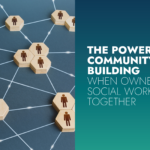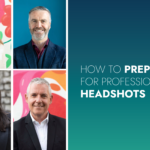Emily Elphinstone has taken a pretty hefty career change, from Actor/Theatre Front of House Manager to Digital Content Assistant. In this blog post, she talks about the transferable skills between these roles.
Who knew a theatre background would be so useful? This former career has helped immensely with mastering communication in a new digital landscape. Beyond the added awareness of language, there are many ways in which how you communicate something can affect how it is understood.
So here are 6 top tips for creating and delivering a presentation, that will truly engage your audience:
1. Pay attention to punctuation
In a script, punctuation is invaluable for telling you how the lines should be spoken, and for giving clues about the character and the real meaning of what is said. In much the same way, your audience won’t be able to follow the train of thought in your writing, unless you give clues in the punctuation about how it should be read. It can vary slightly in different writing styles, but if in doubt, include a comma whenever there is a pause or breath, to divide phrases. A full stop marks the end of the sentence, to show that you are moving on to a further phrase within the same point. And a new paragraph marks an entirely new ‘thought’.
Even if it isn’t ‘designed’ to be performed, it is useful to read drafts aloud to yourself (or at least mouth the words) as you proofread, to make sure that the sense is clear, the grammar is correct, and to spot any sneaky errors you might have missed whilst skim-reading.
Also remember that if it will be published online (or in email), many users might be reading on mobile, so make things as accessible as possible. If there is a seemingly unending paragraph with very little punctuation, readers may give up even if the content is interesting.
2. Who are you talking to, and why?
As an actor, when first reading a script and furiously highlighting your lines (always immensely satisfying), there are two major things to specifically look out for: Who are you talking to, and what are you trying to say?
This remains important whether you are writing something new, or presenting your work to an audience. No matter what the purpose, it’s important to consider your target audience, and what they find engaging… and this isn’t just relevant for content writers. Considering the ‘who’ and ‘what’ helps to narrow down exactly what you are trying to say, and how best to say it for maximum engagement with your particular target audience.
And why are you trying to deliver this information? Remember to keep on track with one theme, in order to keep your message concise. Yes, this will be delivered in through different points and in different ways, but consider what you ultimately want your audience to go away with.
3. Don’t just give the facts, tell the story
“Tell me the facts and I’ll learn. Tell me the truth and I’ll believe. But tell me a story and it will live in my heart forever.” – Native American proverb.
When referring to ‘story’, I don’t mean that you should begin by explaining that you’d always dreamed of going into … (insert career here). But you do need to give some element of context: facts should be paired with why they are important, and how they have changed over time. Information should be paired with examples of when and how this has been seen. And you also need to deliver some sort of personal anecdote, or explanation of how you have reached this point. It is much easier for an audience to understand the facts if they have a sense of how those facts relate to the real world, and to them personally.
4. It’s not a story, without an arc
Once you have all the information, it’s time to ensure that this is crafted into a whole, rather than just a series of points. So consider what shape you want to give your speech.
Like every good story, it needs an arc. Begin strong, by grabbing their attention with a key point. Why not open with your key finding (effectively beginning at the end) and then use the speech to explain it? The speech then has to build: traditionally the beginning is the ‘exposition’ where you explain what you are presenting, the middle builds to the ‘climax’ as you reveal your key points, then you finish with a ‘conclusion’, which explains what you have taught them (rounding back to the beginning).
Did you know that TED Talks are 18 minutes long, because that is the optimal attention span of the audience? So don’t worry about introducing a completely new point every couple of minutes; studies show that most people only remember 3 key points from speeches anyway. Instead, focus on exactly what you are trying to say, how you are going to demonstrate this, and how best to arrange your information so it feels good to perform. Including too many disparate points might make your audience lose track of what you’re really telling them.
5. Before starting a presentation: Breathe!
This may sound obvious, but it’s amazing how many people start speeches with no air in their lungs, and therefore, no power behind their voice. Some people develop a fear that no one really wants to listen, and that they should get through everything as quickly as possible. But ignore this voice!
Whether you’re giving a brief updating to your team, or giving a keynote speech at a large conference, people want to hear what you have to say. You are the expert in whatever it is you’re presenting, be it big or small. But they will be much happier to listen if they don’t have to work too hard to hear, and to understand you. So when it is your time to speak, take the stage, and take a full breath in and out (and then another in-breath of course) before you start speaking.
6. Engage the whole room
I’m sure we have all sat through a monotone lecture before, and left still unsure what the subject was! But now that you have kicked off, it is time to really sell what you have to say. You probably spent time putting this together, so speak in a way which shows off how happy you are to share this information. Make sure you speak to everyone in the audience rather than just the screen/piece of paper and however technical or detailed your message is, imagine you are telling them the most fascinating thing they’ll ever learn, not just delivering a set of bullet points. It doesn’t matter how interesting the content is, if you don’t bring it off the page and speak as if you’re interested in what you’re saying, then no one else will be interested either.


















